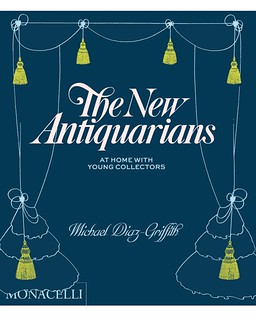
PREV ARTICLE
NEXT ARTICLE
FULL ISSUE
PREV FULL ISSUE
LOOSE CHANGE: JUNE 18, 2023Here are some additional items in the media this week that may be of interest. -Editor While cash ain't dead yet, it does rile up those who aren't so used to handling it. But these TikTokers have a point - asking a business to change a $100 bill early in the morning is a questionable activity. -Editor
Now, a user on TikTok has sparked discussion after calling out customers who do this. In a clip with over 214,000 views as of Friday, TikTok user Jay (@pressed_possum) simply asks,
While I do use Walmart for an ATM on occasion, I refrain from using anything larger than a $20 anymore. There was a time before the pandemic when I started carrying fifties to cover restaurant tabs for my family, but we don't go out as much anymore and when we do, I usually pay with a credit card. I took some $100s on vacation recently but luckily didn't get the side eye trying to spend any of them. -Editor
To read the complete article, see:
Remember that Georgia autobody shop pile-of-revenge pennies story from 2021? Len Augsburger passed along this follow-up. Thanks. -Editor
A consent judgment against Miles Walker and A OK Luxury Autoworks ordered the company to pay former employee Andreas Flaten and several other employees $19,967.09 in back wages as well as the same amount in
Walker paid Flaten's final paycheck in nearly $1,000 in oily pennies in May 2021. In an interview with Atlanta News First at the time, Walker said
In addition to paying Flaten, A OK and Walker must remove
To read the complete article, see:
To read the earlier E-Sylum articles, see:
For bibliophiles, here's an article about the sad destruction of the Hanlin Library in Beijing. -Editor
The most famous
And so it is with the destruction of the Hanlin Library, which at the time was certainly in the conversation for The Hanlin Academy, a sizable complex of buildings, had the misfortune of sitting adjacent to the quarters of the British Legation, which is where the Brits had consolidated their people—including Chinese Christians—in the face of the Dowager Empress's ill-fated rebellion. Operating under the assumption that the Chinese would take extra care in their assault—out of veneration for the thousand years of cultural accumulation sitting right next door—the Brits were shocked to see the whole area go up in flames. But things get a little murky when it comes to responsibility: the Brits claimed the Chinese torched the place (as had been their approach to parts of the city abandoned by the colonizers during the rebellion), and the Chinese claimed the Brits set fire to the library as an act of cultural hostility… Whatever the case, the library was destroyed. Unlike the great Library of Alexandria, we do have some idea of what was lost in the Hanlin fire, despite the fact that no known records of its contents survived. Renowned among its innumerable volumes was a massive 15th-century encyclopedia commissioned by the Ming Dynasty emperor Zhu Di in 1403. Called the Yongle Dadian, the encyclopedia contained some 22,000 sections, into which were crammed 370 million(!) words covering topics as varied as agriculture, drama, geology, medicine, art, history, and literature. To get a sense of the scope of the project, if you stacked every word in the Yongle Dadian one upon the other, they would reach the moon (do not attempt this by yourself).
To read the complete article, see:
New York Magazine published a review of a new book on young collectors of antiques called The New Antiquarians. -Editor
As you write in the book, there's been a noticeable shift in how younger generations are approaching collecting and antiques, and it wasn't what the industry expected. I'm seeing a widespread recognition in the art and design worlds that a revival of interest in antiques is happening. It's a reversal of how the market was perceived. Post-recession, all that antiques dealers see is decline. 9/11 is a marker used in the antiques world to describe the beginning of a waning of interest. And then it really falls off after 2009. The news in the antiques world was, Young people are finished with this stuff, they're never gonna like it again. We're screwed. We've got warehouses full of material that we'll never sell, we'll never make our money back on. It was an apocalyptic time. It was hard to point to what was happening in the antiques world for the simple reason that millennials started off on the wrong foot economically. As they came of age, they had less buying power than previous generations. And collecting is not a young person's game. It never has been — except for a lucky few. At the same time, millennials were obsessing over color and pattern and old things and Sofia Coppola films. And this is when Lady Gaga appeared on the scene. I could see that the sort of ingredients that were contributing to this generation's taste were not minimalism, or, at least, not solely minimalism. My peers weren't high modernists. They didn't think that it was wrong to have old things around. They didn't have an almost ideological narrative about the goodness of modernism and the badness of traditional things. It was a much more well-rounded sense of taste. And what do these new collectors look for? Is it the same stuff as in previous generations? Younger people are going to inevitably be interested in different things than previous generations. That's always been the case. You'll go through a period in which Victorian furniture is reviled, and then in the 1930s, there'll be a Victorian revival, and then the stuff will go back out again, and then comes back again in the '70s.
To read the complete article, see:
Wayne Homren, Editor The Numismatic Bibliomania Society is a non-profit organization promoting numismatic literature. See our web site at coinbooks.org. To submit items for publication in The E-Sylum, write to the Editor at this address: whomren@gmail.com To subscribe go to: https://my.binhost.com/lists/listinfo/esylum All Rights Reserved. NBS Home Page Contact the NBS webmaster 
|



